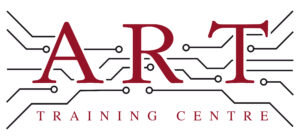Definition
Dewetting is a phenomenon in electronics manufacturing where a liquid, typically solder, fails to spread evenly across a surface, resulting in the formation of beads or gaps. This can occur on printed circuit boards (PCBs) or other components during soldering processes. Dewetting is considered a fault that can lead to poor electrical connections and compromised reliability of electronic assemblies.
How It’s Used in the Industry
Dewetting is a critical consideration during the soldering of components to PCBs. When solder is applied, it should flow and cover the connection points adequately. If dewetting occurs, it can lead to insufficient solder joints, which may fail during operation. Technicians must inspect solder joints to ensure proper wetting; this involves visual checks and possibly using tools like microscopes or X-ray machines for detailed examination. Understanding dewetting is essential for both trainees and experienced professionals, as it directly impacts the quality and reliability of electronic products.
History & Origins
Dewetting became a recognized issue in electronics manufacturing during the late 20th century as soldering technologies evolved. The introduction of surface mount technology (SMT) and the shift towards lead-free soldering materials highlighted the importance of effective solder wetting. Standards such as those developed by IPC (Institute for Printed Circuits) began to address dewetting, leading to improved guidelines and practices in the industry. This emphasis on quality and reliability has since shaped modern electronics manufacturing processes.
Variations
There are several types of dewetting, including incomplete wetting and solder balling. Incomplete wetting occurs when solder does not fully adhere to the surface, while solder balling refers to the formation of small solder balls due to poor wetting. Both variations can result from factors like surface contamination, solder composition, or improper heating. Understanding these differences is crucial for technicians, as they may require distinct approaches for identification and resolution.
Modern Applications
Today, dewetting is a significant concern in the production and repair of electronic devices, particularly in surface mount and advanced assembly processes. Manufacturers must ensure compliance with IPC standards to maintain product quality and reliability. Dewetting can lead to defects that compromise performance, making its prevention and correction vital in training programmes for technicians. By addressing dewetting effectively, companies can enhance the durability and functionality of their electronic products.
Practical Tips & Training
To mitigate dewetting, technicians should maintain clean surfaces and use appropriate soldering techniques. Regular inspection with visual aids or magnification can help identify potential issues early. It’s crucial to follow safety protocols when handling soldering equipment. Structured training and certification in soldering standards, including IPC guidelines, can significantly improve understanding and management of dewetting, ensuring higher quality in electronic assemblies.


